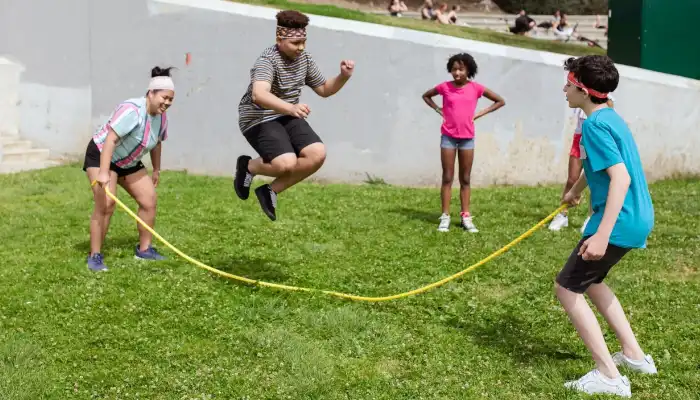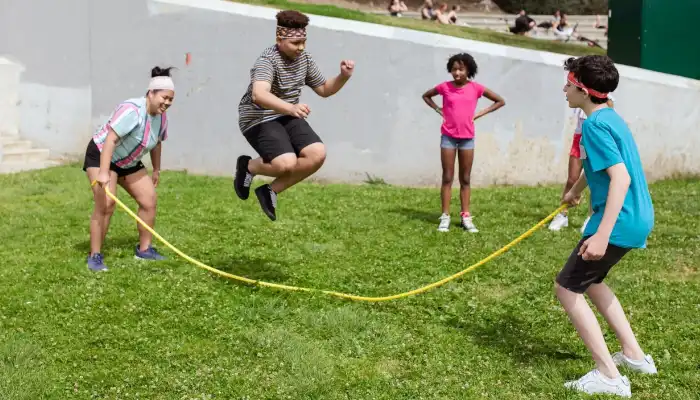
Youth sports can nurture teamwork, discipline, and love for sport through various opportunities. Sometimes, however, the competitive nature and intense training schedules might result in burnout which is an emotional, physical, and mental exhaustion state that detracts young athletes from the joy of playing sports.
Youth sports burnout is much higher than you may realize. These studies suggest many young athletes will experience this at some point leading to decreased motivation, poor performance, or quitting sports altogether. Signs should be recognized early enough followed by steps being taken to prevent it so that a good experience filled with fun is maintained among young players.

Warning Signs: When Play Becomes a Burden
Burnout in youth sports combines physical changes with behavioral changes as well as emotional symptoms. Parents need to watch out for these things, so do coaches and kids themselves:
- Physical Signs: Frequent tiredness; frequent injuries or noticeable decrease in athletic performance.
- Emotional Signs: Burning out kids might become irritable or frustrated or they may simply hate their sport anymore. In worst cases depression or anxiety symptoms could also manifest themselves according to (Cote & Fraser-Thomas 2014)
- Behavioral Signs: Burnout signs include withdrawal from practice and games; lack of enthusiasm generally for any event as well as loss of motivation amongst others in young athletes.
All those participating in youth sports including parents, peers, and even coaches throughout the season have to keep their eyes open to see if there are such signs. Early intervention is important because it helps stop the onset of burnout which could make the athlete hate the sport forever.
The Culprits Behind Burnout: What Fuels the Fire?
Many factors can cause burnout in children’s sports activities (Cote & Fraser-Thomas 2014). Here are some key ones:
- Pressure to Perform: Intense pressure from parents or coaches about winning or unrealistic goals can put heavy demands on young athletes. The emphasis should be on development, not dominance.
- Winning Above All Else: Overemphasis on winning and a culture that celebrates victory at all costs can result in burnout. Participation and the fun of the game should come first.
- Lack of Balance: Sports are important but they shouldn’t take up an athlete’s entire life. To prevent burnout, one must strike a balance between academics, hobbies, and social life.
- Unrealistic Expectations and Training Demands: If placed upon young athletes, excessive training hours or unrealistic expectations can lead to quick burnout. Age, skill level, and individual requirements should form the basis for tailoring training programs.
Parents, coaches, and sports organizations could attend to these factors hence creating an environment where young athletes will have longer stay enjoying their sports.
Strategies for Preventing Burnout in Youth Sports
There are many benefits of youth sports for kids. Physical health, as well as mental wellness, are built through teamwork and discipline among children as they play sports.
However, at times, tireless ambition and the weight of wanting to be great can lead to burnout which takes away the fun from these young players who were initially attracted to this amazing sport. This chapter will explore some ways of lowering burnout in youth sports.
Building a Balanced Foundation:
- Variety of Activities: Encouraging youngsters to engage in many different types of sports during their childhood rather than concentrating on one helps them develop a wide range of skills, reduce overuse injuries, and maintain their interest.
- Breaks and recovery periods: The human body needs time to recharge just like any other machine. Thus, it is necessary to include rest days and recovery periods into an athlete’s schedule from an early age.
- Realistic Goals and Expectations: However, this may lead to frustration when children are given unrealistic targets they cannot achieve or feel inadequate. The impact on young players which emanates from using it as a strategy is that they take part in sports with a positive attitude.
Cultivating a Supportive Environment:
- Good Connections: Harmonious relationships must exist between coaches, teammates, and athletes for the sports experience to be successful. Thus, such an environment should be created where mistakes become learning opportunities and respectful communication becomes normal.
- Open Communication: For example, these avenues need not only be open for addressing our concerns but also enhance trust within us parents or guardians who sometimes feel obliged to watch and cheer their darling kids playing these games.
- Mentorship and guidance: Creating networks that support younger athletes through experienced older ones promotes team culture among them.
Keeping the Fun Factor High:
- Intrinsic Worthiness: Remind young athletes why they started playing in the first place: helping them find back the fun aspect of sports itself, competition excitement as well as being part of a team.
- Autonomy and Decision-Making: Young athletes should have some say in how they train or play; thus, this will enable them to take full ownership of their experiences without getting bored too quickly.
- Celebrating Milestones: While victories are certainly worth celebrating, acknowledging progress, effort, and teamwork achievements is equally important. This way our young athletes will remain focused on their goals and hence continue maintaining high spirits.
Building Resilience:
- Mindfulness and Stress Management: Simple mindfulness techniques as well as stress management skills help young athletes navigate competitive pressures while maintaining a healthy attitude.
- Goal Setting and Visualization: Although teaching goal setting and visualization may expose kids to self-doubt, it enables them to focus on what they want in life and brings positive thinking to the mind.
- Resilience Training: Challenges and failures are part of sports. This helps these youngsters accept that failure is part of life but at the same time gain more experience which can be used later on due to the persistence skills acquired early in life.
The Team Behind the Athlete: Parents and Coaches
Preventing burnout in youth sports takes a group effort. Parents and coaches play a huge role in creating a supportive environment that fosters positivity.
- Unconditional Support and Encouragement: Children must be made to know that they can always lean on somebody’s support in whatever performance, whether good or bad. Such support comes from parents who are ready to back up their offspring no matter how they performed during the previous match.
- Leading by Example: How parents behave and their attitude towards games such as running surpasses sportsmanship which is a very important factor before judging some of these individuals giving this area of entertainment a bad name, because of numerous match-fixing controversies leading to the loss of innocent athletes life in different matches held globally every year.
- Long-Term Development: What matters most is not just about the outcome of each game but rather, how well our kids develop over time. It may count for something when they win all their competitions but it is more beneficial for society to teach children how to LOVE THE GAME, not just win.
Conclusion
Kids’ play loses its fun if stress gets involved, thereby denying young athletes an awesome childhood. For this reason, parents, coaches, and athletes need to collaborate and focus on wellness so that they can have a worthwhile experience while playing together, promoting fairness as well as enjoyment. Remember that scores do not matter, cultivate a lifelong love for sports, and learn valuable lessons along the way.
